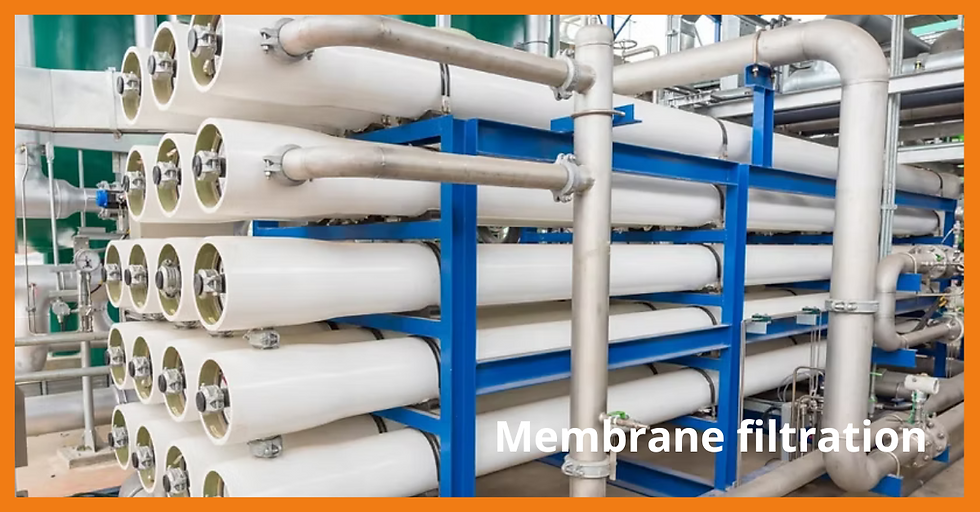Bank filtration - Monitoring the Total Cell Count (TCC) in a groundwater catchment with artificial infiltration
- bNovate

- Apr 16
- 3 min read
Updated: Jun 11

Bank filtration is an often-used process for water treatment.
It can take several days for the water to trickle through the sand and gravel layers to the pumping well. This groundwater can be artificially enriched by infiltration basins, pumped up and often used directly as drinking water. Adsorption and biological processes in the filter retain particulate and biodegradable matter and microbes.
Bank filtration is widely applied due to its efficiency, naturalness and low energy demand.
BactoSense as an early warning system
BactoSense can quantify the efficiency of the bank filter's cell retention. It detects over 99% of all microbial cells and provides the results within only 20 minutes. Reducing biodegradable matter and microbes is essential to producing biologically stable drinking water. The latter ensures grid protection with low chlorine addition.
Consequently, it lowers operation costs and has a positive effect on the taste of the drinking water

Typical application
BactoSense delivers exact data of the total cell count (TCC), the high nucleic acid (HNA) and low nucleic acid (LNA) cell counts and ratio.
TCC includes all microbial cells (intact and damaged), while HNA and LNA counts are measurements of the amount of DNA, large and small, respectively, contained in each cell.
Measuring cell counts with BactoSense before and after a bank filter enables quantifying the efficiency of cell retention. Different parameters often influence bank filters. Pump rates, quality of raw water, heavy rains or flooding, and the composition of the filter can strongly affect the filter's efficiency.
Online flow cytometry measurements with BactoSense facilitate cell count quantification under different conditions. Comparing data sets from different scenarios helps to understand, model, and optimise the water treatment process.
The application of online flow cytometry in water treatment will soon be a standard procedure.
Field Example
A primary goal of the field study at the groundwater pumping well in Zurich Hardhof is to measure the influence of different pumping rates on the cell counts.
Figure 2 shows that Bactosense easily detected a fast regrowth of bacteria shortly after the pump stopped through the TCC and HNAC values. At the same time, the particle counting device failed to detect this event. This demonstrates the high sensitivity of BactoSense.

Figure 3 shows that, when the pump started, an increased cell count in the infiltration basin did not influence the cell counts of the pumped water. Nevertheless, many other parameters can constantly affect the filter's efficiency.
For this reason, the surveillance of groundwater pumps should be continuous. This ensures a high drinking water quality.

Advantages of BactoSense
Fully automatic water sampling, incubation, analysis and cleaning are carried out automatically;
Results available 20 minutes after sampling;
Easy handling due to a safe-to-handle cartridge system. No handling of chemicals and no sample preparation necessary;
Compact instrument with a small footprint allows various applications and easy transport;
Detection of more than 99% of microbial cells;
Low operation costs;
Easy system integration thanks to multiple interfaces;
User-friendly operation and maintenance concept;
Selectable measuring interval;
Integrated colour screen shows results, graphs and hints directly;
Freely selectable gating.
Book a demo today to explore how BactoSense can help ensure safe drinking water anywhere, anytime.










Comments